An exile from world cricket from 1970 to 1991 meant that South Africa made their Cricket World Cup debut only in the 1992 edition, and this meant that a generation of talented players missed out on an opportunity to play in the pinnacle event of the sport.However, ever since returning to the cricketing fold, the South African team has almost always been one of the better sides in the World Cup. We look at a playing XI of South African cricketers based on their performances in the World Cups – a team which, if they played together at their peak, could (at least on paper) better the best performance of the Proteas and go on to lift the elusive trophy for the nation.As would be expected from a South African side, the team has plenty of all-rounders, depth in batting and many bowling options. Only those players who have played at least 10 World Cup matches for South Africa have been considered. Given the versatility of most players, the batting order may change as per the situation of a game.
#1 Andrew Hudson
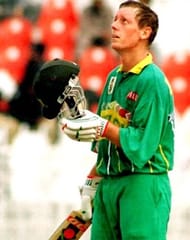
WC Matches: 12
Runs: 571
Batting Avg: 47.58
For his solid and reliable batting as an opener in the 1992 and 1996 editions of the World Cup where he scored one century and four fifties, Andrew Hudson merits selection for one of the opening slots in the team.
The highlight of his World Cup career was the attacking 161 he scored against minnows Netherlands at Rawalpindi in 1996, and Hudson often provided a stable start alongside Kepler Wessels in 1992 and Gary Kirsten in 1996 to lay down a solid foundation for the middle-order to consolidate on.
#2 Gary Kirsten
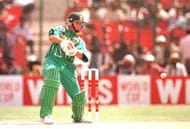
WC Matches: 21
Runs: 806
Batting Avg: 47.41
Hudson’s opening partner in the 1996 World Cup, Gary Kirsten gets the other opener’s slot in this XI. Kirsten’s best moment in a World Cup however came not in South Africa colours, as he coached India to glory in the 2011 edition.
But as a batsman for the Proteas, Kirsten had an impressive record too. He was one of the batting mainstays for the side in the 1996 and 1999 World Cups and his knock of 188* against UAE at Rawalpindi in 1996 is still the highest score made by a South African batsman in ODIs.
#3 Graeme Smith (captain)
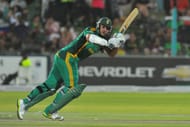
WC Matches: 20
Runs: 747
Batting Avg: 39.31
Every successful side needs a strong captain to lead them to glory, and Graeme Smith will be considered as one of the all-time best captains of South Africa. With his good batting record in World Cups (where he has scored six half centuries and often provided a solid start to the innings) in addition to his safe catching (he holds the record for maximum catches by a South African in World Cups – 15), his inclusion in this XI as the skipper is a no-brainer.
With the pair of Hudson and Kirsten taking the openers’ positions on merit, Smith will be a reliable number three (similar to Gautam Gambhir’s role at the 2011 World Cup) in the side. Given the lack of spinning options in South African sides, Smith’s off-breaks can be handy too and will provide some variety to the bowling attack.
#4 Jacques Kallis
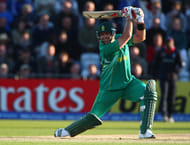
WC Matches: 36
Runs: 1148
Batting Avg: 45.92
Wickets: 21
Bowling Avg: 43.04
Kallis has been South Africa’s best player in World Cups by far. A solid and reliable contributor with the bat, ball and also in the field, Kallis made his World Cup debut in 1996, and was a key member of the side in the 1999, 2003, 2007 and 2011 editions of the event. He is also the country’s leading run-scorer in the tournament.
The knock of 96 in the successful run-chase against India in the 1999 World Cup is one of the memorable knocks that Kallis played with the bat in the tournament. And his bowling, where he provided the seam bowling option who guaranteed nearly 10 overs every game, was a huge bonus for his captains.
#5 Herschelle Gibbs
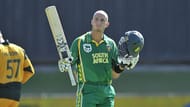
WC Matches: 25
Runs: 1067
Batting Avg: 56.15
Similar to Graeme Smith, Herschelle Gibbs is included in the side to play in the middle-order instead of his preferred opening role. However Gibbs, who has batted in positions from 1 to 7 in his ODI career, has the versatility to succeed in the middle-order too. His brilliant fielding is an added advantage to the runs that he scores.
Many will remember Gibbs for the dropped catch off Steve Waugh in the 1999 World Cup, which many believe ultimately cost the Proteas the trophy, but the player has a stellar batting record in the tournament. He is, after all, South Africa’s second highest run-scorer after Kallis in World Cup history. However, ironically both his centuries in World Cups (against Australia in 1999 and New Zealand in 2003) came in losing causes.
#6 AB de Villiers (wicket-keeper)
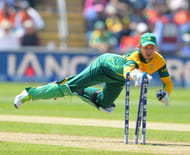
WC Matches: 15
Runs: 725
Batting Avg: 51.78
AB de Villiers merits selection in the side on the basis of his batting alone, and the fact that he’s a brilliant wicket-keeper (apart from being an outstanding fielder) means that he will don the gloves in this XI and help include another bowling option in the side. Thus, the reliable Mark Boucher misses out on a spot in this side.
De Villiers is the only South African batsman to have scored 3 centuries in World Cup history, and many will argue that he deserves to bat higher, but with the additional burden of wicketkeeping, a provisional number six position will suit the side’s cause with the talent in the batting order ahead of him in the XI.
#7 Lance Klusener
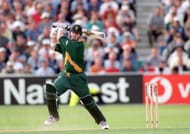
WC Matches: 14
Runs: 372
Batting Avg: 124.00
Wickets: 22
Bowling Avg: 22.13
The player of the tournament in 1999, Lance Klusener was the pivotal player for the Proteas with many match-winning knocks and crucial wickets. The player nicknamed “Zulu” holds the record for the highest batting average in World Cup history (for a batsman with at least 10 innings) and was dismissed just twice in 6 innings in the 1999 World Cup.
In this side, Klusener will play the role of the floater in the batting order, and his batting position will often depend on the situation of the game. His ability to finish games at number 6-7 will win most games for the side. And he will also give the side a good bowling option by completing his quota of 10 overs tidily and picking up important wickets.
#8 Shaun Pollock
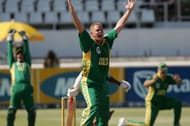
WC Matches: 31
Wickets: 31
Bowling Avg: 31.29
South Africa’s second highest wicket-taker in World Cup history, Shaun Pollock will take the responsibility of bowling with the new ball for the side. But for the dramatic choke at the end of the 1999 World Cup semifinal by South Africa, Pollock’s bowling figures of 5 for 36 with which he helped his side dismiss the Aussies for just 213 would have been part of World Cup folklore.
Pollock’s batting average in World Cups, a meagre 17.43 runs per innings, is not a true reflection of his talent with the bat, and he can contribute with some handy runs at quick pace in the lower-order.
#9 Brian McMillan
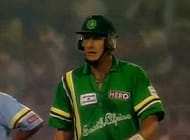
WC Matches: 15
Wickets: 17
Bowling Avg: 25.47
Apart from Hudson, Brian McMillan is the only other player in this XI who played in the 1992 World Cup. A handy lower-order batsman, McMillan kept things tight with his medium-pace bowling. He was a key member of the South African team in the 1992 and 1996 editions of the World Cup.
Always a reliable player for the side and considered among the best all-rounders in the world at his peak, he stepped up to the occasion whenever needed – whether with the bat with useful runs, or with the ball by picking up important wickets, or picking up smart catches with his reliable slip-fielding.
#10 Robin Peterson
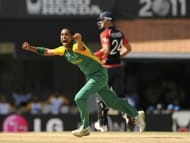
WC Matches: 10
Wickets: 16
Bowling Avg: 20.00
Every bowling attack, despite having some top fast bowling options, needs to be balanced with the presence of a spinner. And ironically there’s only one specialist spinner in South African World Cup history who meets our selection criteria of having played at least 10 WC matches.
But Peterson’s inclusion in the side isn’t only by default, as he’s done well in the tournament with his tidy left-arm spin bowling and was the side’s leading wicket-taker in the 2011 edition. The three-wicket opening spell against England at Chennai and more famously the match-winning cameo against India at Nagpur have been the standout moments of Peterson’s World Cup career so far.
The depth of this XI’s batting line-up can be gauged from the fact that Peterson, who has 6 first-class centuries and 4 fifties in international cricket, bats at number 10.
#11 Allan Donald
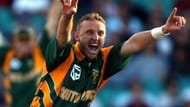
WC Matches: 25
Wickets: 38
Bowling Avg: 24.02
The fast bowler’s World Cup career highlight unfortunately will be him being run out to tie the game in “that” semi-final, but Allan Donald has also been South Africa’s best bowler and leading wicket-taker in the tournament. The spearhead of the bowling attack from 1992 to 2003, Donald has put in many match-winning spells for his side.
“White Lightning”, as Donald was nicknamed during his playing days, was known for his aggressive fast bowling. The only “non-batsman” in this XI, Donald single-handedly carried the South African bowling for long, until the arrival of Shaun Pollock to world cricket, with whom he formed a potent fast-bowling partnership. Naturally then, the duo will share the new ball for this side and be a big threat to any opposition.
#12 Jonty Rhodes (12th man)
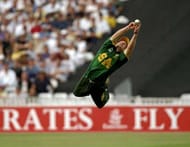
While his World Cup batting record isn’t very impressive, Jonty Rhodes’ selection as the 12th man for the team is a no-brainer. In fact, Rhodes will be an automatic choice as the 12th man for almost any fantasy team in cricket with his outstanding fielding skills. Rhodes’ fielding was a real asset to the Proteas as he helped save many runs and inflict dismissals of batsmen – none more famous than that runout of Inzamam-ul-Haq in the 1992 World Cup.
Looking for fast live cricket scores? Download CricRocket and get fast score updates, top-notch commentary in-depth match stats & much more! 🚀☄️
